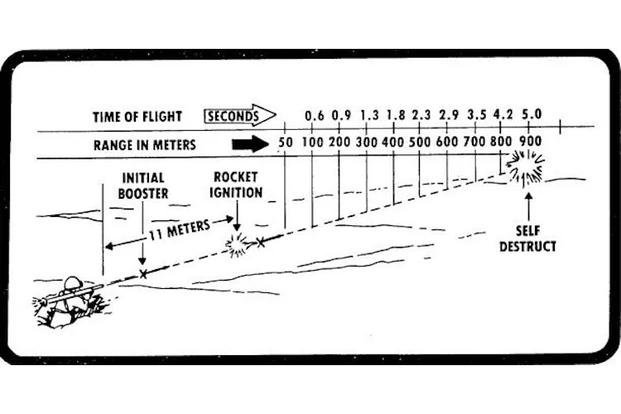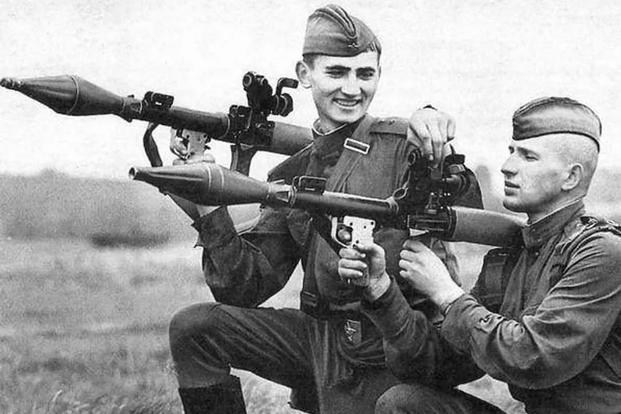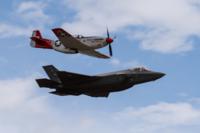The United States and the Soviets disagreed on almost everything; except the fact that anti-tank infantry capabilities are necessary for decisive offensive combat. The Soviets fear our tanks because of their armor, speed, and firepower and raced us in the manufacture of rocket propelled grenades, also known as RPGs. Due to the variety of RPGs in circulation, we will focus on the RPG-7, the most widely used of all Soviet-era anti-tank weaponry.
The RPG-7 anti-tank grenade launcher is cheap, simple, and effective. The RPG-7 is part of one of many evolutionary branches of rockets. It is a decedent of the German Panzerfaust anti-tank weapon from which all RPG series stem from. In 1961 the RPG-7 was adopted by Soviet Armed forces.
The RPG-7 is 37.8 inches in length and weighs 14.5 lbs unloaded and 19 lbs when loaded with the 85mm caliber round (the rocket). It has a rate of fire of 4-6 rounds per minute at an arming range of 5 meters. It has a sighting range of 500 meters and a maximum range of 900 meters, at which point it self destructs. This speed is more or less three football fields per second.
The initial velocity of the rocket is 117 meters per second that increases up to 294 meters per second when the rocket assist engages. At full speed, it can penetrate up to 13 inches of armor at zero degrees.
This weapon has seen a wide range of use throughout the world along with the communist favorite AK-47.

The grenade is separated into two parts, the warhead and sustainer motor, and the booster charge. These two parts must be screwed together before the grenade is ready to fire.
When the projectile is first launched it is powered by a small strip powder charge to reduce the backblast area from harming the gunner. At approximately 11 meters the sustainer rocket kicks in, ignites, and boosts the rocket to maximum velocity.
The fins open after launch with canted surfaces that spin the rocket and stabilize the rocket in flight.
The rocket itself is 36.62 inches long and weighs 4.6 pounds. HEAT rounds are olive drab, and practice rounds are black. They use a point impact fuse with a base detonator.
The shape of the warhead is to penetrate tank armor by using the Munroe Effect:
The greatly increased penetration of an explosive into a surface (as of metal or concrete) that is caused by shaping a conical or hemispherical hollow in the forward end of an explosive cartridge - Merriam-Webster Dictionary
When the round detonates a small cone of metal forms and burns through the armor. There is no explosion after the core penetrates the armor, it is often the metal continuing out the other side of the target.
Since the RPG-7 is a direct fire weapon, it's effectiveness on the battlefield is directly affected by the ability of the gunner. The weapon's biggest weakness is crosswind when leading a target down range. In winds greater than 7 miles per hour, a gunner cannot expect to hit more than 50% of the time beyond 180 meters. They must calculate both wind direction and velocity, but even then results may vary.
There are two standard sights for this weapon: Iron sights and a telescopic sight.
Iron sights are permanently attached and can sight 200 to 500 meters with no wind or lead adjustment. In a conventional force, it is the backup sight system, but since most forces who use this weapon are unconventional, it is usually the primary.
The Soviet tactical doctrine regarding the RPG-7 states that it is most effective at 300 meters or at a point blank target with a height of two or more meters. The reasoning for 300 meters is that it will reduce the target reaction time to take evasive action or to counterattack. Even if it doesn't kill the target, it's still going to scare the sh*t out of it long enough to reload and strike again.
A U.S. Army test against a stationary M60 tank concluded that at 300 meters the probability of a gunner hitting his target is 30%. A second round has a 50% chance of hitting. The round was designed to penetrate 13 inches of armor but in practice penetrates 11 inches of steel instead.
During these tests, the U.S. Army also found that exposed tanks not in defilade are twice as vulnerable as one that is. A troop is to react immediately when fired at by an RPG-7. Because a second round is more likely to hit, it is imperative to suppress with machine guns, pop smoke, and move out of the kill zone.

Out of all the Soviet weapons, the deadliest is their propaganda infecting governments around the world.

MORE POSTS FROM WE ARE THE MIGHTY:
Why getting in trouble early makes you a better leader
The ridiculous anatomy of most Army Reserve drill days
7 real excuses troops use that no NCO ever believes
We Are The Mighty (WATM) celebrates service with stories that inspire. WATM is made in Hollywood by veterans. It's military life presented like never before. Check it out at We Are the Mighty.















